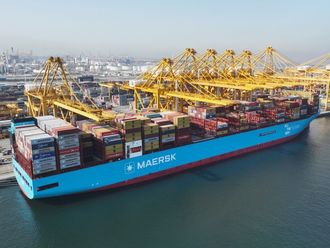London: Atlantic Basin oil producers are nibbling away at Opec’s prized market share in Asia thanks to the most competitive crude prices in seven years. The exporter club’s output cuts are partly to blame.
Brent, a global benchmark, closed at a premium of just 57 cents a barrel to Dubai crude on Monday, the greatest incentive to move North Sea oil east since June 2010, data from PVM Oil Associates in London show. It was at about $2.50 at the end of November, when the Organisation of Petroleum Exporting Countries said it would cut output. North Sea flows to Asia doubled this year from the same period in 2016.
Supply of heavy grades, dominating much of the output of Saudi Arabia and neighbouring countries, has diminished since Opec and allied nations started cutting output from Jan. 1. While Middle East flows have fallen, stockpiles have proved harder to shift in other producing regions, including the North Sea, where rising loading programs offer a sign that output is gaining. Global inventories rose in the first quarter, despite the supply cuts, according to the International Energy Agency.
Musical chairs
“Crude is trading like a game of musical chairs,” said Richard Fullarton, founder of London-based commodity hedge fund, Matilda Capital Management. “If Opec extends cuts then more Brent and WTI will head to the east” which in turn will drive up shipping costs.
Oil prices had their biggest weekly drop since early March last week, as accelerating US supply weighed on prices. The weakness is in evidence in Europe, where the key North Sea market is still showing signs of excess.
Brent prompt timespreads hit their widest level on a non-expiry day since early this year on April 18, with the difference between the nearest two contracts touching 56 cents. At the same time, the one-week spread on contracts for difference allowing traders to insure price exposure for their North Sea crude shipments week-by-week, plunged to its lowest level since November. Glencore Plc, the world’s largest commodities trader, this month bought a cargo of Brent crude at $1 a barrel below the North Sea benchmark, the widest discount in 22 months.
Popular trade
The Dubai-Brent spread, technically an exchange of swaps for futures, is not only important for physical traders as it controls the flow of Atlantic basin crude into Asia, but also for speculators as it’s a popular trade among commodities hedge funds. If the spread continues to weaken, Opec could then struggle to sell its own “expensive” barrels, forcing the gulf producers to cut official selling prices to make their grades competitive again, according to Fullarton.
“It is evident that Atlantic Basin crude markets are struggling to clear,” JPMorgan senior oil analyst David Martin said in an emailed report. “North Sea crude market differentials have slumped in recent weeks, highlighting the tepid pace of market tightening thus far.”
Cheaper in Asia
As the Brent market continues to weaken, the chances of heavy crude grades tightening further are growing. A number of major crude producing nations reached an initial agreement to extend output cuts, Saudi Arabia’s oil minister said last week. Khalid Al-Falih said at a conference in Abu Dhabi that the aim of current cuts to reduce inventories to below their five-year average has failed.
As the premium for North Sea oil diminishes relative to the Dubai grade, it becomes comparatively cheaper in Asia, making the trade more attractive.
Traders shipped at least 42 million barrels of North Sea oil for delivery to Asian buyers this year, up from 20 million barrels a year earlier, according to lists of charters and tanker tracking data compiled by Bloomberg. Shipments to China this year equate to 160,000 barrels a day. The Asian country’s total imports averaged about 7.6 million barrels a day in 2016, according to customs figures.
Meanwhile a technical committee of Opec and non-Opec nations was said to conclude Friday that a six-month extension of the current output cuts deal will be necessary. A prolonging of the current output agreement would likely strengthen Dubai crude further, as supply of heavy crudes would continue to be limited. Opec’s next meeting is due to take place in Vienna on May 25, while the next data on North Sea crude loadings are expected later this week.
“The production cuts mean there is less heavy oil supply,” said Giovanni Staunovo, commodity analyst at UBS. “If you look at the loadings for the North Sea you see a pick up, so one market is better supplied than the other.”












